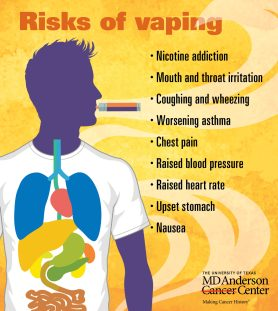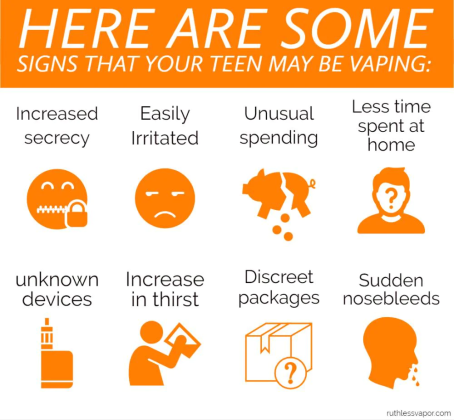E-CIGS impacting students
According to the Center for Disease Control (CDC), in 2022 more than 3 million middle school and high school students reported having used a commercial tobacco product in the past 30 days.
Electronic cigarettes (e-cigarettes), sometimes called vapes, continue to be the most used tobacco product among these students. Because e-cigarettes can deliver high levels of nicotine and come in flavors that appeal to young people, vaping puts them at risk for nicotine addiction.
Texas lawmakers are using legislation to help deter students from vaping or using e-cigarettes. House Bill 114 was signed by Governor Greg Abbott and takes effect Sept. 1. The bill mandates students caught with a vape be placed into a disciplinary alternative education program (DAEP).
Navasota High School Principal Kristi Ramsey sent a plea to parents and guardians via email to request help spreading the message of the dangers of vaping.
“The number of students who are vaping on campus is alarming,” stated Ramsey in the email. “We are working hard to monitor the situation and enforce the anti-vaping laws, but we are seeking your help. We are concerned about student safety and health issues connected to vaping. Please take time to talk to your child about the dangers of vaping. Please monitor your child and look for the signs at home.”
Ramsey included several graphics in the email to help parents and guardians with those conversations.
The email continued, “If students are caught on campus or at campus events using or in possession of vaping devices, it is now an automatic DAEP placement. In order to keep students on campus and in class, we need your help.”
Despite age 21 being the legal age to purchase or use tobacco products and e-cigarettes, minors are exposed to marketing by tobacco companies through various platforms including television, social media signage etc. Mandatory disclaimers to tobacco advertisements aren’t enough to deter minors from trying their products. Many are enticed by vape flavors advertised to taste like fruit, candy and other flavors.
Identifying e-cigarettes Tips provided by CDC.
• E-cigarettes come in many shapes and sizes. Some look like regular cigarettes, cigars, or pipes. Larger e-cigarettes such as tank systems – or “mods” – do not look like other tobacco products.
• Some e-cigarettes look like other items commonly used by youth, such as pens and other everyday items. New e-cigarettes shaped like USB flash drives are popular among youth, including JUUL and the PAX Era, which looks like JUUL and delivers marijuana.
As a parent or caregiver, you may have heard about the use of USB flash drive-shaped e-cigarettes, including JUUL (pronounced “jewel”). JUUL is the top-selling e-cigarette brand in the United States.
JUUL is being used by students in schools, including in classrooms and bathrooms. JUUL’s nicotine liquid refills are called “pods.” According to the manufacturer, a single JUUL pod can contain as much nicotine as a pack of 20 regular cigarettes. JUUL delivers nicotine in a new form called “nicotine salts,” which can make it less harsh on the throat and easier to use by youth.
JUUL also comes in flavors that can appeal to youth.
Risks for youth
Most e-cigarettes contain nicotine, which is highly addictive. Nicotine exposure during adolescence can:
• Harm brain development, which continues until about age 25.
• Impact learning, memory, and attention.
• Increase risk for future addiction to other drugs.
• Young people who use e-cigarettes may be more likely to go on to use regular cigarettes.
• Many e-cigarettes come in kid-friendly flavors – including mango, fruit, and crème – which make e-cigarettes more appealing to young people.
E-cigarette aerosol is not harmless. It can contain harmful substances, including:
• Nicotine
• Cancer-causing chemicals • Volatile organic compounds • Ultrafine particles
• Flavorings that have been linked to lung disease
• Heavy metals such as nickel, tin, and lead
For more information about e-cigarettes visit www. cdc.gov/ecigarettes.



